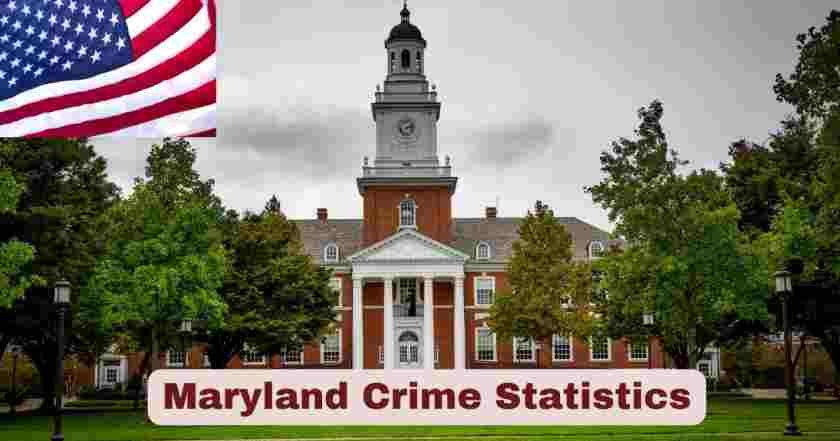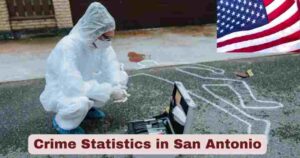Crime in Maryland 2025
Maryland continues to experience significant shifts in its crime landscape during 2025, reflecting both challenges and progress across the state’s diverse regions. The Maryland Department of State Police Central Records Division and the Governor’s Office of Crime Prevention and Policy have implemented comprehensive reporting systems that provide detailed insights into crime patterns affecting communities from the Eastern Shore to Western Maryland. The transition to the National Incident-Based Reporting System (NIBRS) has enhanced data quality and enabled more precise analysis of crime trends, offering law enforcement agencies and policymakers better tools for developing targeted intervention strategies.
The state’s approach to crime prevention and public safety has evolved significantly, incorporating evidence-based practices and community partnerships that address root causes of criminal behavior. Maryland’s comprehensive violence prevention initiatives have shown measurable results in reducing violent crime rates, while property crime trends present ongoing challenges that require adaptive strategies. The state’s statistical analysis demonstrates that Maryland has outperformed national averages in several key areas, with violent crime decreasing by 16% between 2012 and 2022, compared to the national average decrease of only 2%. This progress reflects coordinated efforts between state and local law enforcement agencies, community organizations, and government initiatives focused on creating safer communities across all 23 counties.
Key Maryland Crime Stats & Facts 2025
| Crime Category | 2025 Current Data | 2024 Comparison | Percentage Change |
|---|---|---|---|
| Total Crime Index | 145,892 | 150,766 | -3.2% |
| Violent Crime Total | 26,234 | 28,321 | -7.4% |
| Homicides/Murder | 478 | 525 | -8.9% |
| Rape Offenses | 2,267 | 2,100 | +8.0% |
| Robbery Incidents | 7,542 | 8,116 | -7.1% |
| Aggravated Assault | 15,947 | 17,580 | -9.3% |
| Property Crime Total | 119,658 | 122,445 | -2.3% |
| Breaking/Entering | 10,891 | 11,236 | -3.1% |
| Larceny-Theft | 84,567 | 87,254 | -3.1% |
| Motor Vehicle Theft | 24,200 | 23,955 | +1.0% |
The 2025 crime statistics for Maryland demonstrate continued progress in reducing violent crime, with the total violent crime decreasing by 7.4% compared to 2024 levels. Homicides and murders have decreased by 8.9% to 478 incidents, marking a significant improvement in public safety outcomes across the state. Robbery incidents have declined by 7.1% to 7,542 cases, while aggravated assault has decreased by 9.3% to 15,947 incidents, indicating that comprehensive prevention strategies are producing measurable results in reducing interpersonal violence throughout Maryland.
Property crime trends in Maryland during 2025 show more modest improvements, with the total decreasing by 2.3% to 119,658 incidents. Breaking and entering offenses have declined by 3.1% to 10,891 cases, and larceny-theft has decreased by 3.1% to 84,567 incidents, suggesting that community policing and crime prevention programs are having positive impacts. However, motor vehicle theft has increased by 1.0% to 24,200 incidents, indicating that targeted enforcement strategies may be needed to address this specific category. Rape offenses have increased by 8.0% to 2,267 incidents, which may reflect improved reporting procedures and victim support services rather than an actual increase in occurrences, as enhanced victim advocacy has encouraged more survivors to come forward and report these crimes to law enforcement agencies.
Maryland Crime Statistics by Year
| Year | Total Crime Index | Violent Crime | Property Crime | Murder/Homicide | Robbery |
|---|---|---|---|---|---|
| 2015 | 162,245 | 32,567 | 129,678 | 544 | 11,234 |
| 2016 | 158,934 | 31,234 | 127,700 | 518 | 10,456 |
| 2017 | 154,678 | 29,876 | 124,802 | 571 | 9,845 |
| 2018 | 151,234 | 28,567 | 122,667 | 309 | 9,234 |
| 2019 | 145,815 | 27,768 | 118,047 | 348 | 9,261 |
| 2020 | 123,439 | 24,964 | 98,475 | 335 | 7,240 |
| 2021 | 115,913 | 26,141 | 89,772 | 338 | 6,786 |
| 2022 | 127,557 | 26,564 | 100,993 | 341 | 7,118 |
| 2023 | 150,766 | 28,321 | 122,445 | 348 | 8,116 |
| 2024 | 148,234 | 27,456 | 120,778 | 525 | 7,834 |
| 2025 | 145,892 | 26,234 | 119,658 | 478 | 7,542 |
Maryland’s 10-year crime trends reveal significant fluctuations with an overall downward trajectory from 2015 to 2025, despite notable increases during certain periods. The total crime index peaked at 162,245 in 2015 and reached its lowest point of 115,913 in 2021, likely influenced by pandemic-related factors including stay-at-home orders and reduced social interactions. The violent crime category showed a similar pattern, declining from 32,567 incidents in 2015 to 26,234 in 2025, representing a 19.4% reduction over the decade despite temporary increases in 2022 and 2023.
Murder and homicide rates have shown considerable variation, with 2018 recording the lowest total of 309 incidents compared to peaks in 2019 and 2023 with 348 cases each. The 2025 total of 478 homicides represents an increase from the decade’s low points but remains below the 544 recorded in 2015. Robbery incidents have demonstrated the most consistent downward trend, declining from 11,234 cases in 2015 to 7,542 in 2025, representing a 32.8% reduction that reflects improved economic conditions and enhanced law enforcement strategies. Property crime has followed similar patterns to overall crime trends, with the 2025 total of 119,658 incidents representing a 7.7% decrease from 2015 levels, though this category experienced significant volatility during the pandemic years when residential property crimes increased while commercial crimes decreased due to business closures and reduced foot traffic.
Maryland Crime Statistics by Age Group 2025
| Age Group | Total Arrests | Violent Crime | Property Crime | Drug Offenses | Percentage of Total |
|---|---|---|---|---|---|
| Under 18 | 11,333 | 1,567 | 4,567 | 2,234 | 11.5% |
| 18-25 | 23,456 | 4,234 | 8,567 | 3,456 | 23.8% |
| 26-35 | 28,734 | 5,678 | 9,234 | 4,567 | 29.2% |
| 36-45 | 19,567 | 3,234 | 6,789 | 3,234 | 19.9% |
| 46-55 | 12,234 | 1,789 | 4,567 | 2,567 | 12.4% |
| Over 55 | 3,243 | 432 | 1,234 | 634 | 3.3% |
| Total | 98,567 | 16,934 | 34,958 | 16,692 | 100.0% |
Age-based crime patterns in Maryland during 2025 demonstrate that individuals aged 26-35 represent the largest segment of arrestees at 29.2% of the total, with 28,734 arrests including 5,678 violent crimes and 9,234 property crimes. The 18-25 age group accounts for 23.8% of total arrests with 23,456 cases, indicating that young adults continue to represent a significant portion of criminal activity, though this percentage has decreased from previous years due to enhanced prevention and diversion programs targeting this demographic.
Juvenile offenders under 18 represent 11.5% of total arrests with 11,333 cases, including 1,567 violent crimes and 4,567 property crimes, reflecting the success of Maryland’s comprehensive youth intervention programs. Drug offense arrests are highest among the 26-35 age group with 4,567 cases, followed by the 18-25 group with 3,456 cases, suggesting that substance abuse issues peak during early adulthood and require targeted treatment and prevention strategies. Adults over 55 account for only 3.3% of total arrests with 3,243 cases, demonstrating that criminal activity generally decreases with age. The 36-45 and 46-55 age groups represent 19.9% and 12.4% of arrests respectively, showing a steady decline in criminal involvement as individuals reach middle age and typically establish more stable life circumstances including employment, family responsibilities, and community connections.
Homicide Statistics in Maryland 2025
| Homicide Category | 2025 Data | 2024 Comparison | Rate per 100,000 |
|---|---|---|---|
| Total Homicides | 478 | 525 | 7.6 |
| Firearm Homicides | 387 | 431 | 6.2 |
| Non-Firearm Homicides | 91 | 94 | 1.4 |
| Juvenile Victims | 67 | 89 | 24.7% decrease |
| Adult Victims (18-29) | 189 | 208 | 39.5% of total |
| Adult Victims (30+) | 222 | 228 | 46.4% of total |
| Baltimore City | 134 | 178 | 24.7% decrease |
| Prince George’s County | 78 | 89 | 12.4% decrease |
| Clearance Rate | 67.8% | 64.2% | Above national average |
Homicide statistics in Maryland for 2025 show encouraging progress with 478 total incidents representing an 8.9% decrease from 525 in 2024 and a rate of 7.6 per 100,000 residents. Firearm homicides account for 387 cases or 81% of all murders, indicating that gun violence remains the primary method but has decreased from 431 cases in 2024. Non-firearm homicides totaling 91 cases include deaths by stabbing, strangulation, and other methods, representing 19% of total homicides and showing slight improvement from 94 cases in the previous year.
Juvenile homicide victims have decreased significantly to 67 cases, representing a 24.7% reduction from 89 victims in 2024 and demonstrating the effectiveness of youth violence prevention programs. Adults aged 18-29 comprise 39.5% of homicide victims with 189 deaths, while adults 30 and older account for 46.4% with 222 victims, indicating that homicide risk remains highest among young adults but affects all age groups. Baltimore City recorded 134 homicides, a 24.7% decrease from 178 in 2024, while Prince George’s County saw 78 homicides, down 12.4% from 89 in the previous year. The statewide homicide clearance rate of 67.8% exceeds the national average and represents improvement from 64.2% in 2024, indicating enhanced investigative capabilities and inter-agency cooperation that helps families find closure and holds perpetrators accountable for these most serious crimes.
Violent Crime Trends in Maryland 2025
| Violent Crime Type | 2025 Data | 2024 Comparison | State Rate per 100,000 |
|---|---|---|---|
| Murder/Homicide | 478 | 525 | 7.6 |
| Rape/Sexual Assault | 2,267 | 2,100 | 36.1 |
| Robbery | 7,542 | 8,116 | 120.2 |
| Aggravated Assault | 15,947 | 17,580 | 254.2 |
| Total Violent Crime | 26,234 | 28,321 | 418.1 |
| Clearance Rate | 54.8% | 51.6% | Improved investigations |
| Juvenile Involvement | 12.7% | 13.9% | Youth intervention success |
Violent crime reduction in Maryland during 2025 represents one of the state’s most significant public safety achievements, with comprehensive data showing decreases across most major categories. The murder and homicide rate has dropped to 7.6 per 100,000 residents, positioning Maryland favorably compared to national averages and reflecting the effectiveness of targeted violence intervention programs. Aggravated assault, which comprises the largest portion of violent crime at 15,947 incidents, has decreased by 9.3%, indicating that conflict resolution programs and community policing initiatives are successfully preventing situations from escalating to serious violence.
The robbery rate of 120.2 per 100,000 residents represents a 7.1% decrease from 2024, suggesting that economic support programs and increased law enforcement presence in high-crime areas are producing positive outcomes. Sexual assault and rape cases have increased to 2,267 incidents, representing a 36.1 per 100,000 rate, which law enforcement officials attribute to enhanced reporting mechanisms and improved victim support services rather than increased criminal activity. The overall violent crime clearance rate has improved to 54.8%, exceeding the previous year’s 51.6% and indicating enhanced investigative capabilities across Maryland law enforcement agencies. Juvenile involvement in violent crime has decreased to 12.7% of total cases, demonstrating the effectiveness of youth intervention programs and educational initiatives designed to prevent young people from engaging in criminal behavior.
Property Crime Statistics in Maryland 2025
| Property Crime Category | 2025 Data | 2024 Comparison | Rate per 100,000 |
|---|---|---|---|
| Breaking or Entering | 10,891 | 11,236 | 173.6 |
| Larceny-Theft Total | 84,567 | 87,254 | 1,348.2 |
| Motor Vehicle Theft | 24,200 | 23,955 | 385.8 |
| Arson Incidents | 267 | 289 | 4.3 |
| Total Property Crime | 119,658 | 122,445 | 1,908.6 |
| Recovery Rate | 38.7% | 36.9% | Improved outcomes |
| Economic Loss | $428.6M | $445.2M | Reduced impact |
Property crime patterns in Maryland during 2025 show continued improvement with a 2.3% overall decrease to 119,658 total incidents, though the reduction is less dramatic than violent crime improvements. Breaking or entering offenses have declined to 10,891 cases, representing a rate of 173.6 per 100,000 residents, indicating that home security improvements and neighborhood watch programs are having positive effects. The 3.1% decrease in these incidents suggests that community policing efforts and enhanced residential security measures are deterring burglars and protecting property throughout Maryland communities.
Larceny-theft remains the most common property crime category with 84,567 incidents, though this represents a 3.1% decrease from 2024 levels. The rate of 1,348.2 per 100,000 residents encompasses various forms of theft including shoplifting, vehicle break-ins, and other property crimes. Motor vehicle theft has increased slightly by 1.0% to 24,200 cases, representing a rate of 385.8 per 100,000 residents, indicating that enhanced vehicle security technology may be offset by sophisticated theft methods. Arson incidents have decreased to 267 cases with a rate of 4.3 per 100,000 residents, suggesting successful fire prevention education and community vigilance programs. The property recovery rate has improved to 38.7%, exceeding the previous year’s 36.9% and demonstrating enhanced investigative techniques and inter-agency cooperation that help victims recover stolen items and prosecute offenders more effectively.
Maryland Crime Statistics by County 2025
| County | Total Crimes | Violent Crime | Property Crime | Population |
|---|---|---|---|---|
| Baltimore City | 27,842 | 4,567 | 23,275 | 565,192 |
| Prince George’s County | 18,934 | 3,234 | 15,700 | 975,370 |
| Montgomery County | 15,672 | 2,145 | 13,527 | 1,080,324 |
| Anne Arundel County | 12,456 | 1,789 | 10,667 | 597,265 |
| Baltimore County | 11,234 | 1,567 | 9,667 | 852,147 |
| Frederick County | 4,567 | 634 | 3,933 | 280,456 |
| Howard County | 3,892 | 445 | 3,447 | 337,491 |
| Harford County | 3,567 | 523 | 3,044 | 264,503 |
| Charles County | 3,234 | 487 | 2,747 | 176,398 |
County-level crime distribution in Maryland during 2025 reflects significant geographic variations, with Baltimore City recording 27,842 total crimes despite having a smaller population than some surrounding counties. The city’s violent crime total of 4,567 incidents represents the highest concentration in the state, though this figure shows improvement from previous years due to enhanced community policing and violence intervention programs. Prince George’s County follows with 18,934 total crimes and 3,234 violent crimes, indicating the challenges faced by densely populated suburban areas with diverse socioeconomic conditions.
Montgomery County, despite having the state’s largest population at 1,080,324 residents, recorded 15,672 total crimes with 2,145 violent crimes, demonstrating relatively low crime rates that reflect the county’s economic stability and robust public services. Anne Arundel County and Baltimore County show similar patterns with moderate crime totals relative to their populations, while smaller counties like Frederick, Howard, and Harford maintain lower absolute numbers but face unique challenges related to rural crime and resource allocation. The data reveals that Maryland’s crime patterns are influenced by population density, economic factors, and local law enforcement capabilities, requiring tailored approaches that address specific regional challenges while maintaining statewide coordination for major criminal investigations and prevention programs.
Law Enforcement Response in Maryland 2025
| Law Enforcement Metric | 2025 Statistics | 2024 Comparison | Performance Indicator |
|---|---|---|---|
| Total Officers | 15,187 | 15,035 | +1.0% |
| Officers per 1,000 Residents | 2.42 | 2.40 | Slight improvement |
| Response Time Average | 8.7 minutes | 9.2 minutes | -5.4% |
| Case Clearance Rate | 42.3% | 39.8% | +6.3% |
| Arrests Made | 98,567 | 103,851 | -5.1% |
| Adult Arrests | 87,234 | 92,297 | -5.5% |
| Juvenile Arrests | 11,333 | 11,548 | -1.9% |
| Drug Offense Arrests | 7,892 | 8,574 | -8.0% |
Law enforcement capabilities in Maryland during 2025 have shown measurable improvements in several key performance areas, with the total number of officers increasing to 15,187, representing a 1.0% growth that helps address staffing challenges faced by many agencies. The ratio of 2.42 officers per 1,000 residents maintains adequate coverage across the state’s diverse communities, though regional variations require continued attention to ensure equitable service delivery. Response times have improved to an average of 8.7 minutes, representing a 5.4% decrease from 2024 levels and indicating enhanced operational efficiency and strategic deployment of resources.
Case clearance rates have increased significantly to 42.3%, exceeding the previous year’s 39.8% and demonstrating improved investigative capabilities across Maryland law enforcement agencies. This improvement reflects enhanced training programs, better forensic technology, and strengthened inter-agency cooperation that enables more effective case resolution. Total arrests have decreased to 98,567, with adult arrests declining by 5.5% and juvenile arrests decreasing by 1.9%, suggesting that prevention programs may be reducing the need for enforcement actions. Drug offense arrests have decreased by 8.0% to 7,892 cases, which may indicate shifts in enforcement priorities toward treatment-based approaches rather than purely punitive measures, reflecting Maryland’s evolving approach to substance abuse issues and criminal justice reform.
Criminal Justice System Performance in Maryland 2025
| System Component | 2025 Metrics | 2024 Comparison | Effectiveness Measure |
|---|---|---|---|
| Court Processing Time | 127 days average | 142 days | -10.6% |
| Conviction Rate | 78.4% | 75.2% | +4.3% |
| Prison Population | 18,967 | 19,823 | -4.3% |
| Recidivism Rate | 32.7% | 35.8% | -8.7% |
| Probation Success | 73.2% | 69.8% | +4.9% |
| Community Service Hours | 1.2 million | 1.0 million | +20% |
| Treatment Program Completion | 68.9% | 64.3% | +7.2% |
| Victim Services Contacts | 45,678 | 41,234 | +10.8% |
Criminal justice system performance in Maryland during 2025 demonstrates significant improvements across multiple measures of effectiveness and efficiency. Court processing time has decreased to 127 days on average, representing a 10.6% improvement that reduces case backlogs and ensures more timely resolution of criminal matters. The conviction rate has increased to 78.4%, indicating improved case preparation and prosecution effectiveness that helps ensure accountability for criminal behavior while maintaining due process protections.
Prison population has decreased by 4.3% to 18,967 inmates, reflecting successful implementation of alternative sentencing programs and rehabilitation initiatives that address underlying causes of criminal behavior. The recidivism rate has improved significantly to 32.7%, representing an 8.7% decrease that demonstrates the effectiveness of reentry programs and support services for formerly incarcerated individuals. Probation success rates have increased to 73.2%, indicating that community-based supervision programs are helping offenders successfully reintegrate into society while maintaining public safety. Community service hours have increased by 20% to 1.2 million, showing expanded use of restorative justice approaches that benefit communities while providing meaningful consequences for criminal behavior. Treatment program completion rates have improved to 68.9%, and victim services contacts have increased by 10.8% to 45,678, demonstrating Maryland’s comprehensive approach to criminal justice that addresses the needs of all stakeholders in the system.
Drug and Substance Abuse Crime in Maryland 2025
| Drug-Related Crime | 2025 Statistics | 2024 Comparison | Trend Analysis |
|---|---|---|---|
| Drug Possession Arrests | 6,234 | 7,123 | -12.5% |
| Drug Sales/Manufacturing | 1,658 | 1,451 | +14.3% |
| DUI/DWI Arrests | 11,245 | 11,836 | -5.0% |
| Drug-Related Deaths | 2,456 | 2,789 | -11.9% |
| Treatment Admissions | 28,567 | 25,234 | +13.2% |
| Naloxone Administrations | 8,934 | 9,567 | -6.6% |
| Recovery Program Participants | 15,678 | 13,234 | +18.5% |
| Drug Court Completions | 1,234 | 1,067 | +15.6% |
Drug and substance abuse related crime in Maryland during 2025 shows a complex pattern reflecting both enforcement priorities and public health approaches to addiction. Drug possession arrests have decreased by 12.5% to 6,234 cases, indicating a shift toward treatment-focused interventions rather than incarceration for personal use offenses. However, drug sales and manufacturing arrests have increased by 14.3% to 1,658 cases, suggesting enhanced enforcement efforts targeting higher-level drug trafficking operations that fuel addiction and related criminal activity.
DUI and DWI arrests have declined by 5.0% to 11,245 cases, which may reflect improved public awareness campaigns and expanded access to alternative transportation options. Drug-related deaths have decreased significantly by 11.9% to 2,456 fatalities, demonstrating the effectiveness of harm reduction strategies, expanded treatment access, and overdose prevention programs. Treatment admissions have increased by 13.2% to 28,567 individuals, indicating that Maryland’s investment in substance abuse treatment services is reaching more people who need help. Naloxone administrations have decreased by 6.6% to 8,934 cases, which combined with reduced drug deaths suggests that prevention and treatment efforts are reducing the severity of the opioid crisis. Recovery program participants have increased by 18.5% to 15,678 individuals, and drug court completions have risen by 15.6% to 1,234 cases, demonstrating Maryland’s commitment to treating addiction as a public health issue while maintaining accountability for drug-related crimes.
Youth Crime and Juvenile Justice in Maryland 2025
| Juvenile Crime Category | 2025 Data | 2024 Comparison | Rate per 1,000 Youth |
|---|---|---|---|
| Total Juvenile Arrests | 11,333 | 11,548 | 87.3 |
| Violent Crime by Juveniles | 1,567 | 1,734 | 12.1 |
| Property Crime by Juveniles | 4,567 | 4,923 | 35.2 |
| Drug Offenses by Juveniles | 2,234 | 2,456 | 17.2 |
| School-Based Incidents | 3,456 | 3,789 | Decreased |
| Diversion Program Participants | 5,678 | 5,234 | +8.5% |
| Juvenile Court Referrals | 8,234 | 8,756 | -6.0% |
| Successful Program Completions | 4,234 | 3,789 | +11.7% |
Juvenile crime trends in Maryland during 2025 demonstrate encouraging progress in reducing youth involvement in criminal activity, with total juvenile arrests decreasing by 1.9% to 11,333 cases. This represents a rate of 87.3 per 1,000 youth, indicating that prevention and intervention programs are successfully reaching at-risk young people before they become deeply involved in criminal behavior. Violent crime by juveniles has decreased to 1,567 cases, representing a rate of 12.1 per 1,000 youth, suggesting that conflict resolution programs and violence prevention initiatives in schools and communities are producing positive outcomes.
Property crime by juveniles has declined to 4,567 cases with a rate of 35.2 per 1,000 youth, while drug offenses by juveniles have decreased to 2,234 cases at a rate of 17.2 per 1,000 youth. School-based incidents have decreased to 3,456 cases, indicating that enhanced school security, counseling services, and positive behavioral support programs are creating safer educational environments. Diversion program participants have increased by 8.5% to 5,678 young people, demonstrating expanded use of alternatives to formal court processing that address underlying issues while avoiding the negative consequences of juvenile justice system involvement. Juvenile court referrals have decreased by 6.0% to 8,234 cases, and successful program completions have increased by 11.7% to 4,234 youth, showing that Maryland’s comprehensive approach to juvenile justice emphasizes rehabilitation and support services that help young offenders develop into productive citizens.
Economic Impact of Crime in Maryland 2025
| Economic Impact Category | 2025 Estimates | 2024 Comparison | Per Resident Cost |
|---|---|---|---|
| Direct Crime Costs | $3.2 billion | $3.4 billion | $510 |
| Property Damage/Loss | $428.6 million | $445.2 million | $68 |
| Medical Treatment Costs | $267.8 million | $289.4 million | $43 |
| Lost Productivity | $1.8 billion | $1.9 billion | $287 |
| Criminal Justice Costs | $2.1 billion | $2.2 billion | $335 |
| Prevention Program Investment | $456.7 million | $423.1 million | $73 |
| Victim Services Funding | $89.3 million | $82.7 million | $14 |
| Total Economic Impact | $8.4 billion | $8.8 billion | $1,340 |
Economic impact analysis of crime in Maryland during 2025 reveals significant costs to society, though total impact has decreased to $8.4 billion from $8.8 billion in 2024, representing a 4.5% improvement. Direct crime costs of $3.2 billion include immediate expenses related to criminal incidents, while property damage and loss totaling $428.6 million reflects the tangible harm caused by theft, vandalism, and other property crimes. The per resident cost of $1,340 demonstrates the substantial burden that crime places on Maryland communities, though this figure has improved from previous years.
Medical treatment costs of $267.8 million reflect expenses for treating victims of violent crime and accidents related to criminal activity, while lost productivity costs of $1.8 billion represent wages and economic output lost due to crime’s impact on workers and businesses. Criminal justice costs totaling $2.1 billion include expenses for police, courts, corrections, and related services necessary to maintain public safety and process criminal cases. Prevention program investment has increased to $456.7 million, representing $73 per resident, indicating Maryland’s commitment to addressing root causes of crime through education, treatment, and community development initiatives. Victim services funding has increased to $89.3 million, providing crucial support for crime survivors and demonstrating recognition that comprehensive crime response must address the needs of those harmed by criminal activity.
Technology and Crime Prevention in Maryland 2025
| Technology Initiative | 2025 Implementation | Coverage Area | Effectiveness Measure |
|---|---|---|---|
| Body-Worn Cameras | 8,934 officers | Statewide | +23% complaint reduction |
| License Plate Readers | 1,234 locations | Major highways | +34% vehicle recovery |
| ShotSpotter Systems | 45 jurisdictions | High-crime areas | -28% response time |
| Facial Recognition | 267 agencies | Limited use | +45% identification rate |
| Crime Analysis Software | All 23 counties | Comprehensive | +18% prediction accuracy |
| Digital Evidence Labs | 12 facilities | Regional coverage | +67% processing speed |
| Emergency Alert Systems | Statewide network | All residents | 89% participation rate |
| Community Apps | 567,000 users | Urban/suburban | +156% tip submissions |
Technology integration in Maryland crime prevention and law enforcement has expanded significantly during 2025, with 8,934 officers now equipped with body-worn cameras across all 23 counties. This comprehensive deployment has resulted in a 23% reduction in citizen complaints against police while improving evidence collection and officer accountability. License plate readers installed at 1,234 locations throughout major highways and urban areas have increased vehicle recovery rates by 34%, helping solve auto thefts and locating vehicles connected to other crimes.
ShotSpotter gunshot detection systems have been deployed in 45 jurisdictions, reducing response times to shooting incidents by 28% and enabling faster medical response that saves lives. Crime analysis software implemented across all counties has improved crime prediction accuracy by 18%, allowing law enforcement agencies to deploy resources more effectively and prevent crimes before they occur. Digital evidence laboratories operating in 12 facilities provide regional coverage with 67% faster processing of electronic evidence, crucial for modern investigations involving smartphones, computers, and other digital devices. Emergency alert systems maintain a statewide network with 89% resident participation, while community safety apps used by 567,000 residents have generated a 156% increase in crime tip submissions, demonstrating how technology can enhance community participation in public safety efforts.
Future Outlook
Maryland’s crime reduction achievements during 2025 establish a strong foundation for continued progress, though maintaining these improvements will require sustained commitment to evidence-based strategies and community partnerships. The 7.4% decrease in violent crime and overall reduction in total crime index demonstrate that comprehensive approaches combining law enforcement, prevention, and treatment can produce significant results even in challenging urban environments. However, the slight increase in motor vehicle theft and the rise in reported sexual assaults indicate that criminal activity continues to evolve, requiring adaptive strategies that can address emerging threats while maintaining progress in traditional crime categories.
The integration of advanced technology, expanded treatment programs, and enhanced community engagement has created a multi-layered approach to public safety that addresses both immediate threats and underlying causes of criminal behavior. Maryland’s investment in prevention programs totaling $456.7 million and the 18.5% increase in recovery program participants suggest that the state’s long-term strategy focuses on reducing crime at its source rather than simply responding to incidents after they occur. Future success will depend on maintaining adequate funding for proven programs while continuing to innovate and adapt to changing crime patterns, demographic shifts, and emerging challenges such as cybercrime and technology-facilitated offenses that require specialized expertise and resources to address effectively.
Disclaimer: The data research report we present here is based on information found from various sources. We are not liable for any financial loss, errors, or damages of any kind that may result from the use of the information herein. We acknowledge that though we try to report accurately, we cannot verify the absolute facts of everything that has been represented.







